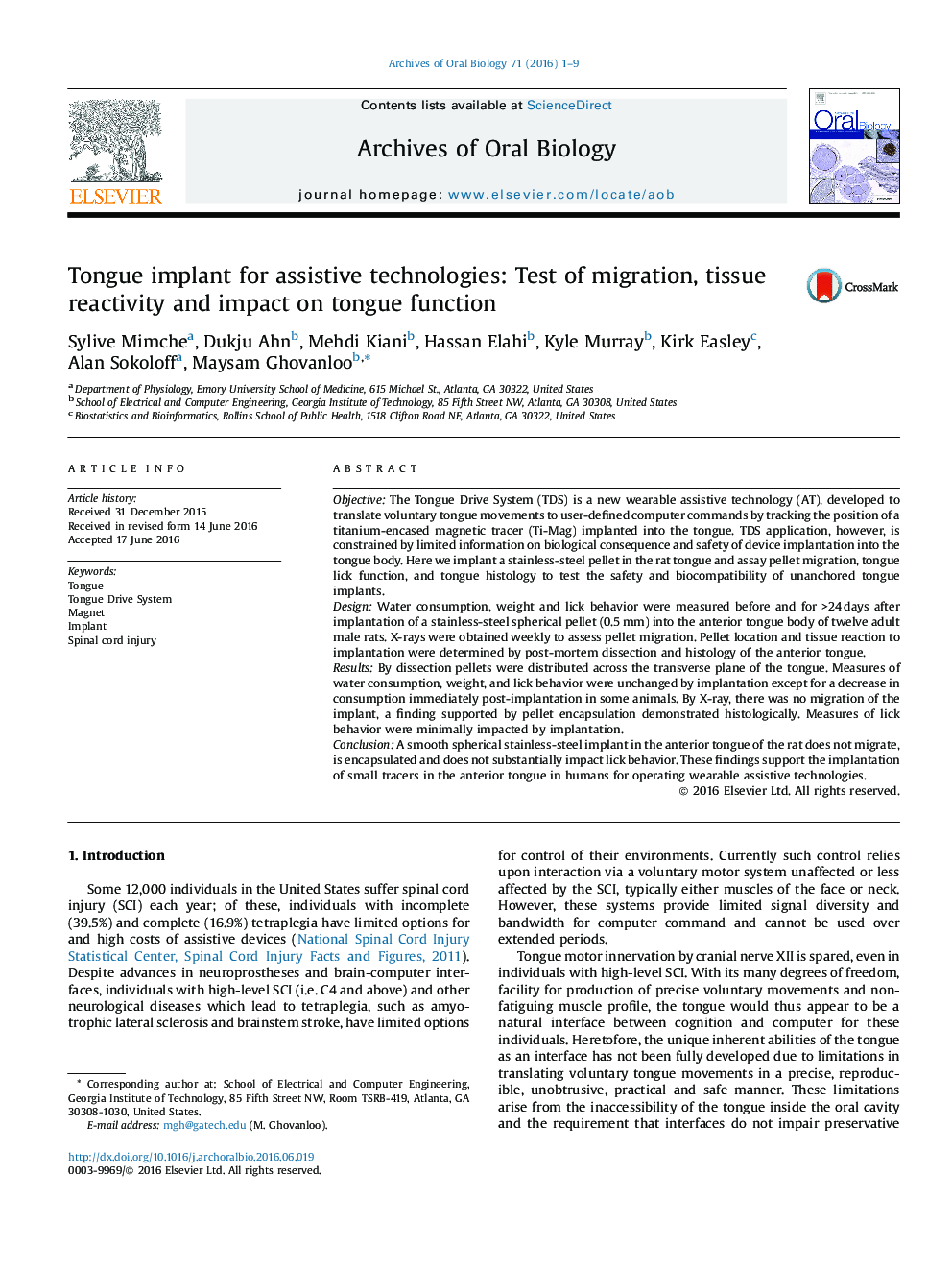| کد مقاله | کد نشریه | سال انتشار | مقاله انگلیسی | نسخه تمام متن |
|---|---|---|---|---|
| 3120560 | 1583282 | 2016 | 9 صفحه PDF | دانلود رایگان |
• Optimal application of the assistive Tongue Drive System requires testing of impact of unanchored implants in the tongue.
• A spherical metal implant in the anterior tongue is encapsulated and does not migrate.
• Implantation of a metal sphere in the anterior tongue minimally impacts licking efficiency and microstructure.
• Minimal biological impact caused by implantation suggests the safety of anterior tongue devices for assistive technology.
ObjectiveThe Tongue Drive System (TDS) is a new wearable assistive technology (AT), developed to translate voluntary tongue movements to user-defined computer commands by tracking the position of a titanium-encased magnetic tracer (Ti-Mag) implanted into the tongue. TDS application, however, is constrained by limited information on biological consequence and safety of device implantation into the tongue body. Here we implant a stainless-steel pellet in the rat tongue and assay pellet migration, tongue lick function, and tongue histology to test the safety and biocompatibility of unanchored tongue implants.DesignWater consumption, weight and lick behavior were measured before and for >24 days after implantation of a stainless-steel spherical pellet (0.5 mm) into the anterior tongue body of twelve adult male rats. X-rays were obtained weekly to assess pellet migration. Pellet location and tissue reaction to implantation were determined by post-mortem dissection and histology of the anterior tongue.ResultsBy dissection pellets were distributed across the transverse plane of the tongue. Measures of water consumption, weight, and lick behavior were unchanged by implantation except for a decrease in consumption immediately post-implantation in some animals. By X-ray, there was no migration of the implant, a finding supported by pellet encapsulation demonstrated histologically. Measures of lick behavior were minimally impacted by implantation.ConclusionA smooth spherical stainless-steel implant in the anterior tongue of the rat does not migrate, is encapsulated and does not substantially impact lick behavior. These findings support the implantation of small tracers in the anterior tongue in humans for operating wearable assistive technologies.
Journal: Archives of Oral Biology - Volume 71, November 2016, Pages 1–9
